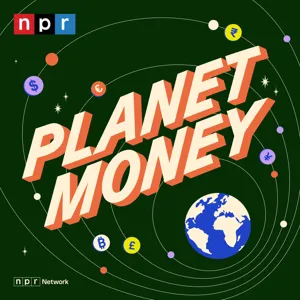Podcast Summary
Global supply chain facing challenges at ports and warehouses: The COVID-19 pandemic, increased demand, and labor shortages are causing port congestion, leading companies to take unusual measures and potential solutions include tech investment, capacity expansion, and stakeholder collaboration.
The global supply chain is facing significant challenges, particularly at ports and warehouses, leading to delays in the delivery of goods. This issue is affecting various industries and consumers, with no clear end in sight. The "happy rover," a container ship, illustrates this problem as it made an unusual journey from Shanghai to Canada to avoid the congestion at West Coast ports. This journey highlights the lengths some companies are taking to navigate the supply chain challenges. The port congestion is due to a perfect storm of factors including the COVID-19 pandemic, increased demand for goods, and labor shortages. To alleviate these issues, potential solutions include investing in technology to streamline processes, expanding port capacity, and increasing collaboration between stakeholders in the supply chain.
A new era for container shipping in the Great Lakes: Despite the Great Lakes' historical limitations, investments in infrastructure are making container shipping economically viable, positioning the region as a potential relief valve for global supply chain disruptions
The Great Lakes, despite being a significant shipping region, have been bypassed by the global trend towards larger container ships due to the limitations of the canals and the lakes themselves. However, with shipping rates at an all-time high due to supply chain disruptions, smaller ports like Cleveland are investing in the necessary infrastructure, such as container scanners, to make container shipping economically viable. These investments are positioning the Great Lakes as a potential relief valve for the global supply chain crisis. Klaus Dorensen and his company, Splithof, made a bet on this trend years ago, and now, the "happy rover" ship is making its way from Shanghai to Cleveland, marking a new era for container shipping in the Great Lakes.
Great Lakes Ports Expanding for European Container Shipments: The Great Lakes ports of Duluth and Cleveland are expanding to accept container shipments from Europe, offering shorter distances and potential cost savings, despite seasonal ice closures and lower volumes compared to East Coast ports.
The Great Lakes, specifically the ports of Duluth and Cleveland, are expanding their capabilities to accept container shipments, making them viable alternatives for shipping goods from Europe. Although they cannot compete with the volume handled by East Coast ports, the relatively short distance and potential for reduced shipping costs make these ports an attractive option, especially during times of congestion at East Coast ports. However, the seasonal closure of the shipping lakes due to ice remains a significant challenge that must be addressed. Despite these challenges, the potential for increased trade between the US and EU, estimated to be around a trillion dollars annually, presents a significant opportunity for growth in the Great Lakes shipping industry.
Warehouse Crisis: Overflowing Spaces and Limited Capacity: The current supply chain crisis has caused unprecedented issues for warehouses, which are crucial links in the supply chain but are running at high occupancy rates and facing increased consumer demand and production challenges, leading to overflowing spaces and limited capacity.
The current supply chain crisis is causing unprecedented issues for warehouses across the country, which are a crucial link in the supply chain. Even before the pandemic, warehouses were running at high occupancy rates, with little room for extra capacity. The pandemic has only exacerbated these issues with increased consumer demand and production challenges. Warehouses are overflowing, and even if space is available, it may already be claimed by tenants. The supply of warehousing space has not kept up with the demand for years, and this tight system has been pushed to its limits. The situation is unprecedented, and the next time a global supply chain crisis hits, the Great Lakes could potentially provide some relief.
Shift towards urban and suburban warehouses: The pandemic accelerated the trend of building warehouses in cities and suburbs, causing a shortage of space and supply chain disruptions. Companies are being more strategic about inventory management to reduce costs.
The logistics real estate business has undergone significant changes in recent years, with a shift towards urban and suburban locations due to the increasing demand for faster shipping. However, building warehouses in cities and suburbs presents challenges due to their expense, crowding, and resident opposition. The pandemic accelerated these trends, causing a shortage of warehouse space and leading to supply chain disruptions. Warehouses are now filling up faster than they can be built, and companies are being more strategic about inventory management to reduce storage costs. The logistics industry is facing a heroic yet futile effort to keep up with the changing demands of retail and e-commerce.
A roller coaster ride in the world of warehousing due to pandemic: The pandemic fueled online shopping surge led to inventory stockpiling, warehouse construction boom, intense competition for limited space, and continued challenges in 2023.
The pandemic accelerated the shift to online shopping, leading to unprecedented growth and a surge in imports. Companies are stockpiling inventory to prepare for potential disruptions, causing a boom in warehouse construction. However, this has resulted in intense competition for limited warehouse space, leaving some companies and clients disappointed. The ripple effects of these challenges are expected to continue into this year. In essence, the pandemic has brought about a "doomsday prepper" mentality in companies, leading to a roller coaster ride in the world of warehousing.




